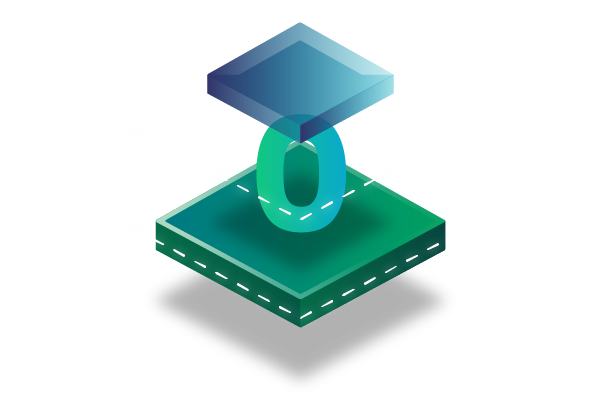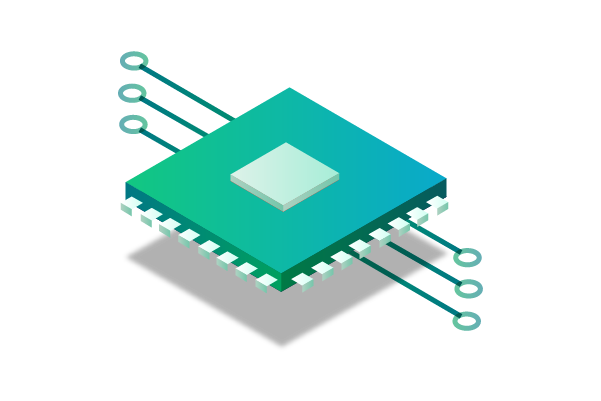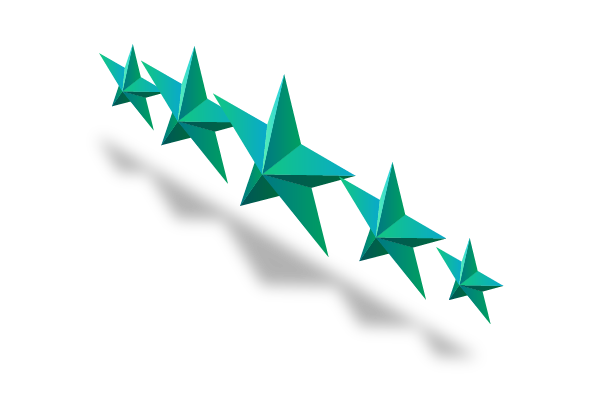The blockchain landscape is evolving at a rapid pace, introducing new layers and protocols to enhance scalability, security, and interoperability. While much attention has been given to Layer 1 and Layer 2 solutions, there’s another layer that’s equally important but often overlooked: Layer 0. This foundational layer serves as the bedrock upon which other layers are built, offering unique advantages that are crucial for the long-term success of blockchain networks.
In this comprehensive article, we will delve deep into the world of Layer 0 blockchains, exploring their fundamental features and the advantages they bring to the table. Whether you are a blockchain enthusiast, a developer, or someone simply curious about the future of decentralized technology, this article aims to provide you with valuable insights into the importance of Layer Zero.
What is Layer 0?

Layer Zero serves as the bedrock of a blockchain system, like the solid foundation of a building. It plays a vital role by handling the way computers (nodes) in the network talk to each other. Instead of dealing with fancy stuff like consensus (Layer 1) or clever ways to make things faster (Layer 2), Layer 0 focuses on making sure messages travel safely and quickly between these nodes.
Think of it as the postal service for blockchain. It ensures that when you send a message (like a transaction or a new block of data), it’s routed correctly, reaches its destination, and is checked to make sure it’s legit. Basically, Layer Zero makes sure the blockchain network runs smoothly by making sure everyone can talk to each other effectively and securely.
Fundamental Features of Layer 0

“Layer Zero” typically refers to the foundational layer in a networking or technology stack. It is sometimes called “Layer 0” or the “physical layer.” In networking, the OSI (Open Systems Interconnection) model, which is a conceptual framework used to understand how different networking protocols interact, defines seven layers. Layer 0, or the physical layer, is the lowest and most fundamental of these layers. Here are some fundamental features of Layer 0:
1. Scalability
- Improved Scalability: Layer 0 enhances scalability by optimizing the P2P network, making data transmission more efficient, reducing latency, and increasing blockchain throughput.
- Faster Data Transfer: Layer 0 speeds up data transfer between devices on the network, resulting in quicker transaction processing and overall system performance.
- Enhanced Peer-to-Peer Network: Layer 0 optimizations improve the reliability and functionality of the peer-to-peer network, ensuring smoother communication between nodes in the blockchain.
- Efficiency Boost: Layer 0 enhancements increase the overall efficiency of the blockchain, enabling it to handle more transactions and data effectively, promoting its growth and usability.
2. Security
- Layer 0 is essential for blockchain security: It’s like the foundation of a secure house.
- It uses fancy math tricks (cryptographic techniques) to protect messages sent in the blockchain.
- Its job is to stop bad guys from messing with the network, like a digital security guard.
- It’s all about keeping your blockchain safe and sound, so your data doesn’t end up in the wrong hands.
Also Read: The Top 10 Fastest Layer 1 Blockchain Networks
3. Interoperability
- Layer 0 has a crucial feature: it acts like a universal translator for different blockchains. This means it can help different blockchains talk to each other and work together smoothly.
- Imagine it as the bridge that connects separate islands. So, it allows these islands (blockchains) to send messages and do business with each other without any language barriers.
- This kind of connection makes it easier for people and businesses to use different blockchains for various tasks. It’s like being able to use different apps on your phone without any problems.
- Overall, Layer Zero’s ability to make blockchains work together is a big deal. It helps build a more connected and versatile blockchain world where everything runs more smoothly.
4. Flexibility
- Layer 0 is built to be flexible and easily customizable, so you can add new stuff or tweak things without messing up what’s already working.
- Its design lets you make upgrades or adjustments to the network smoothly, so you won’t break what’s already in place.
- You can implement fresh features without causing chaos or messing up how things currently run.
- It’s like giving your network the ability to adapt and evolve without causing any major hiccups.
Advantages of Layer 0 Blockchains

Layer Zero blockchains, also known as Layer 0 protocols, are an emerging concept in the blockchain space that offer several distinct advantages over traditional Layer 1 and Layer 2 blockchain solutions. These advantages include:
1. Enhanced Performance
Layer Zero blockchains represent a significant leap forward in blockchain technology by fine-tuning the fundamental network protocol. This optimization empowers these blockchains to process a much larger number of transactions without compromising on speed or security. Essentially, they pave the way for a more efficient and scalable blockchain ecosystem.
2. Lower Costs
Layer Zero brings about significant efficiency improvements that not only enhance network performance but also lead to cost savings in its operation. By fine-tuning data transmission within Layer Zero, the network demands less computational resources, ultimately lowering the expenses associated with maintaining the blockchain infrastructure. These efficiency gains in Layer Zero essentially mean reduced operational costs, making it a crucial component for sustaining a cost-effective and efficient blockchain network.
3. Future-Proofing
Layer Zero blockchains are designed with a forward-looking approach. Their adaptable and flexible structure enables them to easily embrace upcoming technologies and address future challenges, ensuring that the Layer Zero network stays up-to-date and competitive over time. In simpler terms, Layer Zero blockchains are like the foundation of a building, built to last and support whatever innovations come their way.
Real-World Applications of Layer Zero
Layer Zero refers to the physical layer in networking and telecommunications, often referred to as the “physical layer” or “Layer 1” in the OSI model. It deals with the actual hardware components and transmission media that enable data to be transmitted over a network. Here, we’ll explore some real-world applications of Layer Zero technologies:
1. Financial Services
- Layer Zero technology is a game-changer in the world of finance, especially for services that need speedy and rock-solid transactions.
- This innovative approach offers both scalability (meaning it can handle a growing number of transactions) and top-notch security. Imagine it as a super strong vault with a high-speed conveyor belt.
- It’s like the dream solution for things like instant payments, managing assets efficiently, and the world of decentralized finance (DeFi), where people do all sorts of financial activities without traditional banks.
- Layer Zero basically sets the stage for a financial tech revolution, making sure your money moves fast and stays super safe in this digital age.
Also Read: Smart Contract Platforms: A Comprehensive Selection Guide for Your Needs
2. Supply Chain Management
- Layer Zero, within supply chain management, plays a crucial role in enhancing how we track and understand the movement of goods throughout the entire supply chain.
- This improvement directly leads to increased accountability among stakeholders, making it easier to pinpoint responsibility at each stage of the supply chain.
- By enhancing transparency, Layer Zero helps in reducing the chances of fraudulent activities occurring within the supply chain, which can have a significant impact on costs and reputation.
- In essence, Layer 0 acts as a foundational layer of trust, ensuring that goods are handled with integrity and that any irregularities can be quickly identified and addressed.
3. Internet of Things (IoT)
- Layer Zero is well-suited for IoT (Internet of Things) applications: It’s designed to handle a significant number of transactions, which is perfect for IoT devices that constantly communicate and share data.
- Enhanced Security: Layer Zero also provides robust security features, ensuring that these transactions are safe from tampering and unauthorized access. This is crucial in IoT, where data privacy and integrity are paramount.
- Streamlined Communication: With Layer Zero, IoT devices can exchange information efficiently, enabling seamless communication between various devices in the network.
- Reliability: Layer Zero’s ability to handle high volumes of transactions contributes to the reliability of IoT applications, ensuring that data is transmitted and received consistently.
Conclusion
Layer Zero is more than just another layer in the blockchain architecture; it’s the foundational layer that sets the stage for everything else. Its focus on optimizing the underlying network protocol offers unique advantages in scalability, security, and interoperability, making it a crucial component for the future of blockchain technology.
As we move towards a more decentralized and interconnected world, the importance of Layer Zero cannot be overstated. It not only enhances the performance and lowers the costs of existing blockchain networks but also offers the flexibility and adaptability needed to meet the challenges of tomorrow. By understanding and leveraging the features and advantages of Layer Zero, we can pave the way for more efficient, secure, and scalable blockchain ecosystems.
Disclaimer: The information provided by HeLa Labs in this article is intended for general informational purposes and does not reflect the company’s opinion. It is not intended as investment advice or recommendations. Readers are strongly advised to conduct their own through research and consult with a qualified financial advisor before making any financial decisions.

Joshua Soriano
I am Joshua Soriano, a passionate writer and devoted layer 1 and crypto enthusiast. Armed with a profound grasp of cryptocurrencies, blockchain technology, and layer 1 solutions, I've carved a niche for myself in the crypto community.
- Joshua Soriano#molongui-disabled-link
- Joshua Soriano#molongui-disabled-link
- Joshua Soriano#molongui-disabled-link
- Joshua Soriano#molongui-disabled-link

